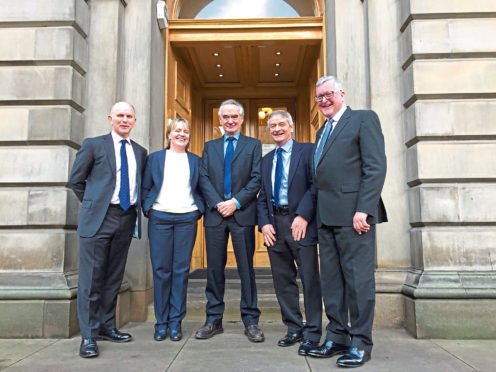The Scottish farming sector needs to change to tackle the challenges posed by Brexit.
That was the conclusion of the Scottish Government’s four agriculture champions in their final report to ministers.
The champions say change is needed, in terms of policy and mindset. They have called for a two-stage, long-term vision for the sector which is based on what the public wants and values in farming.
In stage one of the vision, policies would not be changed radically, but an emphasis would be placed on encouraging industry and businesses to become more entrepreneurial and farm funding would be maintained at current levels.
In the second stage, an element of basic income support would continue, but at a lower rate, and the majority of funding would be allocated to schemes that boost productivity and enhance natural capital. This would be tailored to regional or sectorial needs and capped per farm.
Rural Economy Secretary Fergus Ewing said the findings from the report fed directly into his thinking on developing a future farming strategy.
He said: “I endorse the findings that support based on activity and production should be retained to an extent, but there should be a major new focus on increasing productivity. To support this, we need to better link research and development with on-farm practice, encouraging businesses to collaborate, become more entrepreneurial, and do more to attract people to the sector.”
NFU Scotland welcomed the champions’ report and said it complemented the union’s own vision document, titled Change.
President, Andrew McCornick, said: “The report’s recommendation to continue, but reduce, direct support over a managed transition while increasing emphasis on productivity gains and delivering environmental benefits mirrors the union’s thinking of shifting from area-based support to action-based support. That would recognise and reward those who want to do more.”
The four champions were tasked with advising on the development of a new strategy.
They are: Henry Graham, Scottish chairman of Lantra; Archie Gibson, former chairman of the Scottish Food and Drink Federation; John Kinnaird, farmer and former NFUS president; and Marion MacCormick, a former buying director for Aldi.
